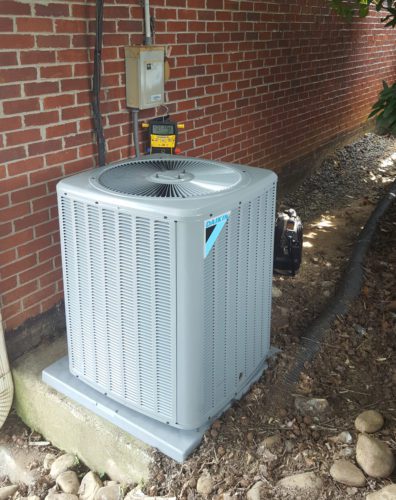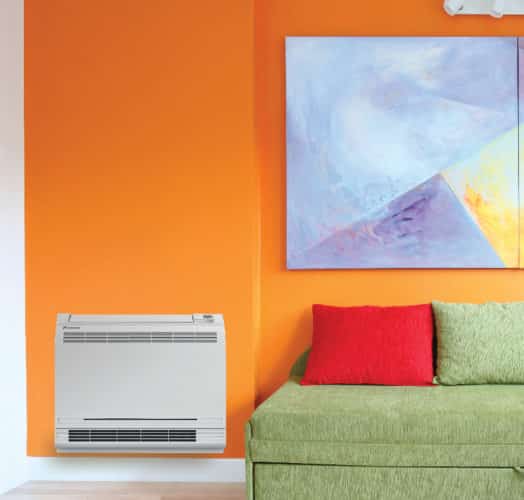HVAC lingo: top 10 terms you should know
Have you ever talked to an HVAC technician and felt like they were speaking a different language? We get it. Heating and cooling is full of technical (and sometimes insider) terms that can be confusing to the average homeowner. But it is actually easier to understand than it might seem at first!
We’ve compiled our top 10 most important HVAC terms below. Taking a little time to understand these will give you the knowledge you need to make important decisions for your home and feel comfortable with your system.
1. FURNACE
This one might seem obvious, but it’s important to understand everything the furnace does. During the colder months, your furnace will heat your home either through gas or electricity. It’s important to note, however, that the main fan (blower) of your system is also located in the furnace. This part of the furnace works year-round to move air (whether hot or cold) through your home.
2. EVAPORATOR COIL
This segment, adjacent to your furnace, is the indoor part of your cooling system. These coils are designed to get very cold and help regulate your home’s temperature. The Evaporator Coil is most likely on top of your furnace, though it can be in other positions based on the type of furnace you have (see next term).
3. UPFLOW / DOWNFLOW / HORIZONTAL
These terms simply refer to the direction in which your system moves the air into your home. You may hear these terms from a technician or read them in a product summary.
In an Upflow system, the air coming into your furnace (called return air) starts at the bottom and is pushed upward into your ductwork. If your indoor unit is in a basement, you almost certainly have an Upflow.
In a Downflow system, the return air comes into your furnace at the top and is pushed downward into your ductwork. If you have registers in the floor, you most likely have a Downflow.
In a Horizontal system, the return air comes into your furnace on one side and flows out the other side. Horizontal systems are more common in attics and crawl spaces, where vertical space is limited.
4. CONDENSER
This is the technical name for your outdoor unit. Most people simply call it the “air conditioner.” It focuses on removing hot air from the home and works with the evaporator coil to cool the home.

5. HEAT PUMP
A heat pump is a type of condenser that works in both heating and cooling. This means a heat pump will always be working. In the summer, it pulls warm air out of the home and sends cold refrigerant back in order to cool it. Conversely, in the winter it pulls ambient heat from the air (this is possible even if it feels cold outside) and sends that warmth into the home.
Heat Pumps are able to heat your home to a certain temperature, but will need help heating your home when temperatures get into the 30s. This is called auxiliary (or emergency) heat and will come from the heating components in your furnace.
6. AFUE/HSPF/SEER
These are all energy ratings for the various types of units. The higher the rating with each of these, the better the system will run. In other words, a higher number means a system will use less energy to heat and cool your home.
AFUE– this stands for Annual Fuel Utilization Efficiency and is relevant to gas furnaces. AFUE is a percentage that shows how much the furnace’s energy source is converted to heating, with the rest being lost to exhaust. So then, a higher percentage means less energy lost. Energy efficient units will have AFUE in the 90s, while standard units will be in the 80s.
SEER– this stands for Seasonal Energy Efficiency Ratio and is for air conditioners. Again, the higher the SEER number, the more efficient the unit. The current highest SEER in the Daikin line is 23, with other units coming in at 12 or above.
HSPF– this stands for Heating Seasonal Performance Factor and is used with heat pumps. This is, in essence, the SEER rating for a heat pump’s heating mode. Most heat pumps will come with both a SEER (cooling) and HSPF (heating) rating. You should look for an HSPF between 8-10, though some can reach above 12.
7. MINI-SPLIT
This is another name for the increasingly popular ductless air conditioning systems. A normal central air system is known as a “split system” since it has both an indoor and outdoor component, and these are just smaller versions of those that don’t use ducts, hence the “mini.”

8. MULTI-STAGE / SINGLE-STAGE
“Stage” is a reference to the level of power that is used to heat or cool your home. A single-stage unit only has one setting. It uses full power all the time, no matter the temperature, to regulate your home. Sometimes this is the right amount of power needed, but many times it is an unnecessary amount. Conversely, a multi-stage unit can alternate its level of power to the necessary amount in the moment. This reduces unnecessary energy use in less extreme temperature conditions. For this reason, multi-stage units are more energy efficient.
9. VARIABLE SPEED / SINGLE SPEED
This refers to the way the blower motor within the unit works. Like the stages above, a single speed motor always blows air at the same setting. Variable speed motors are able to switch their power setting to save energy when it’s not needed. As you can imagine, variable speed units are more efficient.
10. BTU
This stands for British Thermal Unit and is a form of measurement for energy. One BTU is the amount of energy needed to increase the temperature of a pound of water by 1 degree. In central air units, BTUs show how powerful the unit is, whether in heating or in removing heat. The primary factor in determining the amount of BTUs you need is the square footage of your home.
Have questions or want to talk through your system? Feel free to give us a call at 317-203-8149 or set up an appointment online.